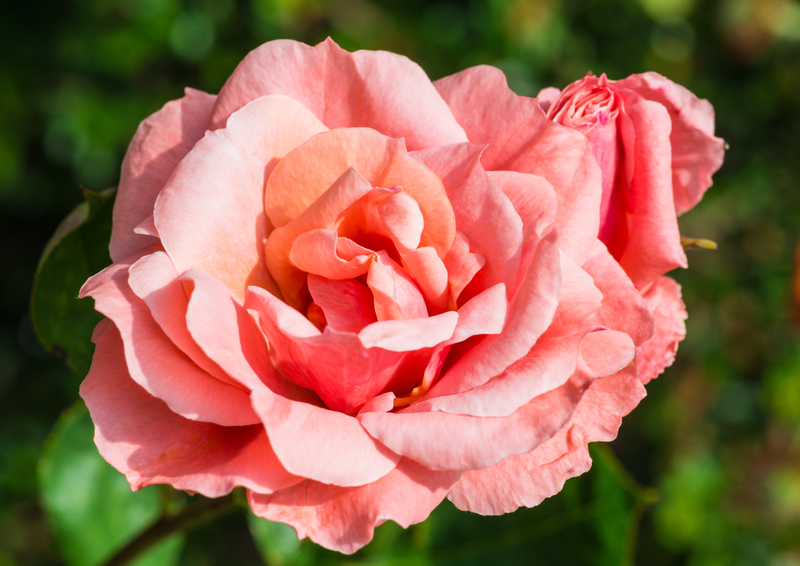How to Maintain a Lush Green Lawn Despite Summer Drought Conditions
Every homeowner dreams of a healthy, vibrant, and lush green lawn to enjoy all summer long. However, when drought strikes and temperatures soar, keeping your grass green can seem like an impossible task. Fear not! With the right lawn care practices, thoughtful water management, and a bit of creativity, your landscape can stay beautiful and resilient through even the driest periods. Read on to discover comprehensive, expert-approved strategies for maintaining a lush green lawn despite summer drought conditions.
Understanding Summer Drought and Its Impact on Lawns
Before diving into practical solutions, let’s examine what drought really means for your lawn, and why standard maintenance routines may not suffice.
- Drought is a prolonged period of below-average rainfall.
- High temperatures cause rapid evaporation and increased water loss from soil and grass blades.
- Most common lawn grasses in North America (Kentucky Bluegrass, Fescue, Bermuda Grass) suffer without supplemental moisture.
- During drought, lawns often enter dormancy, turning brown and appearing dead, but the roots remain viable.
The goal during drought isn’t just to keep your lawn green for appearance’s sake—it’s about preserving the health of the grass for quick recovery once normal rainfall returns.

Smart Watering Strategies for Drought-Prone Lawns
The Best Time to Water Your Lawn during Drought
- Water Early Morning: Watering between 4 a.m. and 9 a.m. minimizes evaporation, letting water penetrate deep into soil.
- Avoid Midday Watering: Water evaporates quickly during the hottest part of the day, wasting resources.
- Evening Watering: May leave grass blades wet overnight, increasing risk of fungal diseases.
How Much to Water a Lawn during Drought Conditions
It’s important not to overwater your lawn, especially during water restrictions.
- 1 inch per week: For most lawns, aim for about 1 inch of water (including rainfall) per week during drought.
- Deep, Infrequent Watering: Water less frequently but for longer periods, encouraging deep root growth.
- Check soil moisture six inches below the surface to gauge watering effectiveness (use a screwdriver to test).
- Install a smart irrigation controller to adjust watering schedules based on actual weather.
Lawn Care Practices to Increase Drought Tolerance
Mowing Tips for a Drought-Resilient Lawn
- Keep Grass Longer: Set mower blades higher (3-4 inches) during heat spells. Taller grass shades roots and reduces evaporation.
- Sharpen Mower Blades: Dull blades tear grass, causing stress. Sharp blades ensure clean cuts and better water retention.
- Leave Clippings: Grass clippings act as a natural mulch, reducing water loss and providing nutrients.
Soil Health and Aeration
Healthy soil is the foundation of a lush lawn during drought. Compacted or poor soil limits root growth and water penetration.
- Aerate Annually: Aeration relieves soil compaction, improving water, air, and nutrient movement to roots.
- Topdress with Compost: Apply a thin layer of compost to boost soil moisture retention and feed microbes.
- Test Soil Regularly: Check for pH and nutrient deficiencies and amend accordingly.
Smart Grass Selection and Overseeding
Some grasses naturally cope better with drought. If you're planning to overseed or renovate your lawn, consider these options:
- Bermuda Grass: Very drought-tolerant; thrives in hot climates.
- Zoysia Grass: Performs well in sun and survives extended dry spells.
- Tall Fescue: Deep roots make it a top choice for cool-season drought resistance.
- Buffalo Grass, Fine Fescue, Bahia Grass: Regionally adapted drought-hardy species.
Interseeding with drought-tolerant cultivars each autumn can gradually improve your lawn’s overall resilience and green color even in dry summers.
Mulching and Soil Protection Techniques
- Mulch Lawn Edges and Garden Beds: Use shredded bark, wood chips, or leaf mulch around trees and beds to conserve soil moisture and reduce competition for water.
- Apply Wetting Agents: On hydrophobic (water-repelling) soils, use commercially-available wetting agents to enhance water penetration and distribution.
- Consider Lawn Alternatives: Wherever practical, replace less-used lawn areas with deep mulch, gravel, or drought-hardy groundcovers like clover or creeping thyme.
Fertilization During Drought
When and How to Fertilize a Lawn in Drought Conditions
- Avoid Fertilizing During Severe Drought: Fertilizers can "burn" grass when water is scarce.
- Opt for Organic, Slow-Release Fertilizers: Apply small amounts in early spring or fall to boost root growth without overstressing the turf.
- Never fertilize dormant or brown grass.
Weed and Pest Management for Healthy Lawns in Summer
- Pulled by Hand: Drought-stressed lawns leave openings for weeds. Remove weeds by hand when small to prevent rapid spread.
- Spot Treatment: Use targeted, drought-compatible herbicides only on active weed growth to minimize impact.
- Monitor for Insects: Drought can increase pest pressures. Treat only if necessary and adopt integrated pest management practices to minimize chemicals.
Lawn Water Conservation and Drought Preparedness
Innovative Water-Saving Tips
- Harvest Rainwater: Install rain barrels on downspouts to collect roof runoff for landscape use.
- Use Graywater: Where legal, irrigate lawns with properly filtered laundry or bath water (not for edible gardens).
- Update Sprinkler Systems: Drip irrigation, soaker hoses, and low-flow systems target roots more efficiently.
- Maintain Irrigation Equipment: Fix leaks and clogs to reduce waste and maximize every drop.
Design Tips for Long-Term Lawn Drought Tolerance
- Reduce Lawn Size: Replace part of your grass with xeriscaping or native planting beds that require little water.
- Strategic Shading: Plant drought-tolerant trees and shrubs to provide partial shade, lowering soil temperature and water loss.
- Smart Lawn Layout: Concentrate your green turf in high-use or visible areas; convert low-traffic sections to alternatives.
Warning Signs: What to Do When Your Lawn Turns Brown in Drought
It's natural for a lawn to go dormant and brown in long droughts--don’t panic! Most established lawns can survive six to eight weeks without water and will green up quickly with rain or irrigation when conditions improve.
- Don't overwater brown lawns: Wait for natural rainfall, especially if watering is restricted locally.
- Avoid traffic on dormant lawns: Walking or mowing can damage brittle, stressed grass.
- Deep soak occasionally: If allowed, water just enough to keep root crowns alive if drought extends longer than two months.
Frequently Asked Questions About Lawn Maintenance in Drought
Should I Overseed or Reseed My Lawn in Drought?
It’s best to wait until fall, after the heat and dryness subside, to overseed or reseed. Seeds need consistent moisture to germinate and grow.
Can I Use Lawn Paint or Dyes in Drought?
Select safe, non-toxic lawn colorants specially designed for turf. This is a cosmetic solution only and won't benefit lawn health but will improve curb appeal instantly.
What Are the Best Alternatives to Grass in Drought-Prone Areas?
- Groundcovers: Clover, thyme, sedum, and creeping herbs require less water than traditional turf.
- Xeriscape: Native or drought-resistant perennials, shrubs, and mulch beds conserve water and add beauty.
- Artificial Turf: For small spaces or play areas, synthetic grass can provide green color year-round without irrigation.

The Takeaway: Building a Resilient, Lush Green Lawn in the Face of Drought
Maintaining a vibrant, lush green lawn during summer drought conditions requires both immediate action and long-term planning. By adopting smart watering techniques, selecting the right grass, improving soil health, and exploring creative landscaping alternatives, you can enjoy a thriving yard that remains beautiful and healthy even in the harshest weather. Remember, resilience is built little by little! Start today, and your lawn will thank you for years to come.
Quick Checklist: Summer Drought Lawn Maintenance
- Water early (before 9 a.m.) and deeply to encourage strong roots.
- Mow high and leave clippings for natural mulching.
- Aerate soil and topdress with organic matter annually.
- Choose and overseed with drought-tolerant grasses.
- Avoid fertilizing and heavy use during peak drought.
- Control weeds and monitor for pests.
- Implement water conservation techniques like rain barrels and drip irrigation.
- Be patient—some brown during drought is normal and usually temporary!
For more tips on lawn care during drought and year-round landscape sustainability, consult your local agricultural extension office or a certified landscape professional.